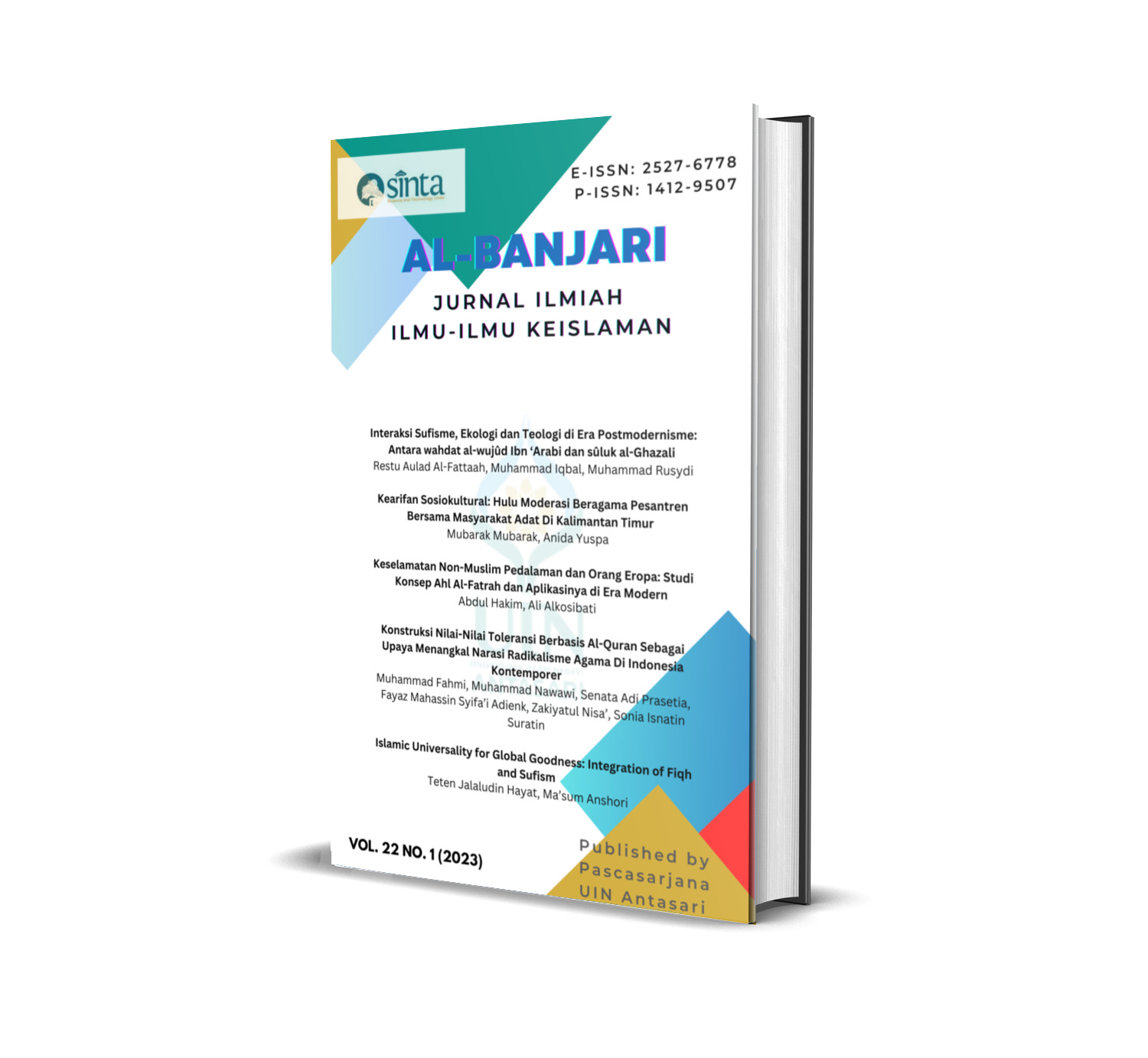Wali in the Perspective of Ulama and the People of Kampung Dalam Pagar Martapura
DOI:
https://doi.org/10.18592/albanjari.v22i2.11270Abstract
This article examines the concept of saintliness (wali) from the perspectives of scholars and the local community in Dalam Pagar Village, Martapura, South Kalimantan. Within the context of Sufism, the notion of saintliness is an intriguing topic that requires in-depth understanding. This research utilizes a qualitative descriptive method, with a focus on fieldwork conducted in Dalam Pagar, where this phenomenon occurs. The research findings reveal that the views of scholars and the local community align with the general understanding within Sufism. They regard saintliness as a result of devoted practice of Islamic Sharia, unwavering faith, and profound piety. Furthermore, the social behaviors of the people in Pagar support this perspective. The community warmly welcomes the presence of saints or individuals considered to have the potential for saintliness, especially when there is endorsement and recognition from respected scholars or spiritual leaders. This recognition is reflected in various forms of reverence, such as pilgrimages, commemorative gatherings (haul), and the display of images or photographs of saints in their homes. However, it is important to note that the community also exercises caution regarding individuals who lack clear legitimacy as saints. This caution becomes more significant in the absence of official endorsement from recognized religious authorities. In conclusion, the concept of saintliness in Sufism significantly influences the culture of the community in Dalam Pagar Martapura. The perspectives of scholars and the behaviors of the community regarding saintliness reflect a traditional understanding rooted in faith, piety, and the practice of Islamic Sharia. Moreover, the legitimacy provided by religious authorities plays a pivotal role in solidifying someone's status as a saint in the eyes of the community.Downloads
Published
2023-12-22
Issue
Section
Articles
License

This work is licensed under a Creative Commons Attribution-ShareAlike 4.0 International License.
Authors who publish with this journal agree to the following terms:
- Authors retain copyright and grant the journal right of first publication with the work simultaneously licensed under a Creative Commons Attribution License that allows others to share the work with an acknowledgement of the work's authorship and initial publication in this journal.
- Authors are able to enter into separate, additional contractual arrangements for the non-exclusive distribution of the journal's published version of the work (e.g., post it to an institutional repository or publish it in a book), with an acknowledgement of its initial publication in this journal.
- Authors are permitted and encouraged to post their work online (e.g., in institutional repositories or on their website) prior to and during the submission process, as it can lead to productive exchanges, as well as earlier and greater citation of published work (See The Effect of Open Access).


































